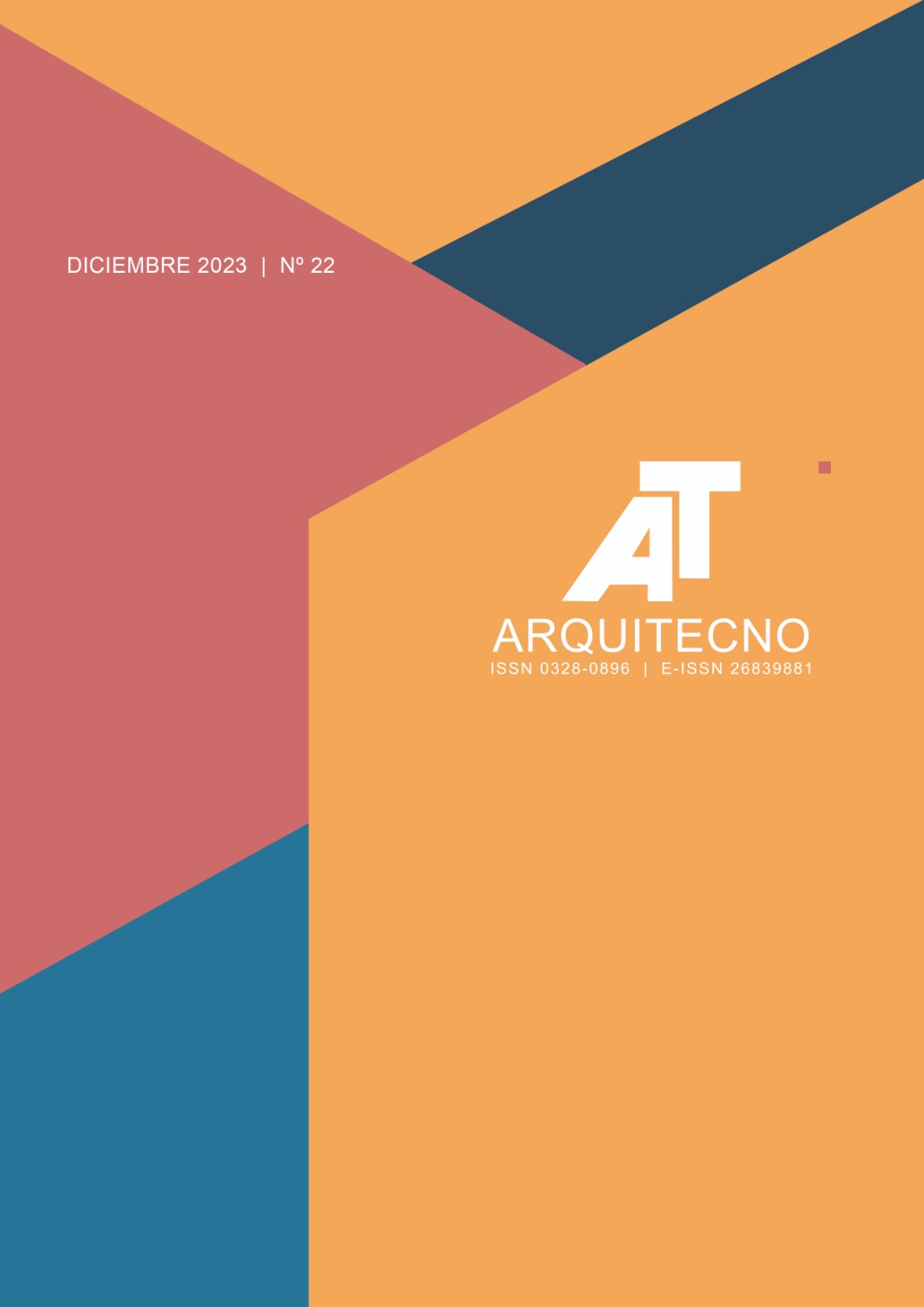Tecnoecosistemas Arquitectónicos. Casa Mármol, Aproximación a la Arquitectura Bioclimática, Confort Ambiental, Eficiencia Energética y Sustentabilidad
DOI:
https://doi.org/10.30972/arq.227247Palabras clave:
ecosistema, impacto ambiental, energías renovables, energía solarResumen
Se desarrolla el caso de estudio en particular en el marco general de la propuesta de tesis con el título preliminar de tecnoecosistemas arquitectónicos, se realiza la descripción y critica del proyecto y construcción de la casa Mármol en la ciudad de Resistencia. Este trabajo toma el caso en un nivel introductorio considerando en primer lugar la relación del clima y la arquitectura desde la concepción del proyecto y las pautas de diseño, la importancia del análisis climático y la determinación de pautas bioclimáticas. También se desarrolla la incorporación de una primera generación de energía solar fotovoltaica y agua caliente sanitaria solar a efectos de mejorar la eficiencia energética y reducir el impacto ambiental en la etapa de utilización de la vivienda. A modo de conclusión se presentan los resultados en la aproximación a la arquitectura bioclimática, el confort ambiental, la eficiencia energética y la sustentabilidad.
Citas
ALÍAS, H. M., JACOBO, G, J., (2004). Situación higrotérmica, energética y ambiental de la construcción arquitectónica en la Región Nordeste de Argentina. Moglia Ediciones SRL,
Corrientes, ISBN: 987-43-7744-5.
BERENT, Mario R., BERENT, Dario F. (2014). Propuestas de construcción sustentable en el proyecto de la Casa Marmol. Primera casa sustentable del NEA. 5° Congreso Internacional Solar Cities “energia en las ciudades: innovacion frente al cambio climatico “. Buenos Aires, 17 y 18 de noviembre. Argentina.
BERENT, Mario R., BERENT, Dario F. (2014). Propuestas de construcción sustentable en el proyecto del Club Aleman Austriaco. 5° Congreso Internacional Solar Cities “energia en las ciudades: innovacion frente al cambio climatico “. Buenos Aires, 17 y 18 de noviembre. Argentina
BERENT, Mario & ROIBON, Maria. PILAR Claudia A. (2011). Arquitectura y ciudad sustentable. analisis de la obra de Soto & Rivarola en el NEA. ARQUISUR 2011. XXX Congreso.
BERENT, Mario & ROIBON, Maria. (2010). Avances en la resolución de EquipamientoReligioso Cultural basado en criterios de sustentabilidad ambiental. Prototipo para lacapilla Jesús Obrero. Revista Comunicaciones Cientificas y Tecnologicas 2010. ISSN 1666-4035
FERNANDEZ, Roberto, + TIPU, (2003), Arquitectura y ciudad. Del proyecto al eco proyecto, ED. NOBUKO Bs As.
GONZALO, Guillermo E. (2015) Manual de Arquitectura Bioclimática y Sustentable (5ta.edición). Ed. CEEMA, Tucumán, ISBN 950-43-9028-5, pp.321.
JEAN LOUIS IZARD – ALAIN GUYOT (1979) Arquitectura Bioclimática. Ed. Gustavo Gilli SA Barcelona, ISBN 84-252-0981-1
JACOBO, G, J., (2001) El confort en los espacios arquitectónicos de la Región NEA. Ediciones
Moglia SRL, Corrientes, Argentina. ISBN N° 987-43-4155-6.
ODUM, Eugene. BARRET, Gary. (2006). Fundamentos de Ecología. 5° edición. Editorial Thomson.
PILAR, Claudia A. VERA, Luis. (2022) Intervenciones fotovoltaicas en barrios de viviendas en las ciudades de Resistencia y Corrientes. ARQUITECNO 21. ISSN: 0328-0896 ISSN-e: 2668-3988. DOI: https://doi.org/10.30972/arq.0216692
PILAR, Claudia A. (2020) El Sol como inspiración en el diseño biomimetico. ARQUITECNO 11. ISSN: 0328-0896 ISSN-e: 2668-3988.
VEDOYA, Daniel E, PILAR, Claudia A, BERENT, Mario R, PRAT, Emma S, KOZAK, Nicolás. (2010). Estrategias de diseño arquitectónico con criterios de sustentabilidad ambiental. XIV Congreso Arquisur. 20-22 octubre. Tarija, Bolivia.
IRAM - INSTITUTO ARGENTINO DE NORMALIZACIÓN Y CERTIFICACIÓN: (1996). Norma 11605. Acondicionamiento térmico de edificios. Condiciones de habitabilidad en edificios. IRAM. Buenos Aires. - (2000). Norma 11601. Aislamiento térmico de edificios. Métodos de cálculo. Buenos Aires. - (2012). Norma 11603. Acondicionamiento térmico de edificios. Clasificación bioambiental de la República Argentina. Buenos Aires.
Descargas
Publicado
Cómo citar
Número
Sección
Licencia

Esta obra está bajo una licencia internacional Creative Commons Atribución-NoComercial 4.0.
Los autores ceden a Arquitecno los derechos de publicación de sus trabajos, toda vez que hayan sido admitidos como parte de alguno de sus números. Ellos, no obstante, retienen los derechos de propiedad intelectual y responsabilidad ética así como la posibilidad de dar difusión propia por los medios que consideren.





52.jpg)
